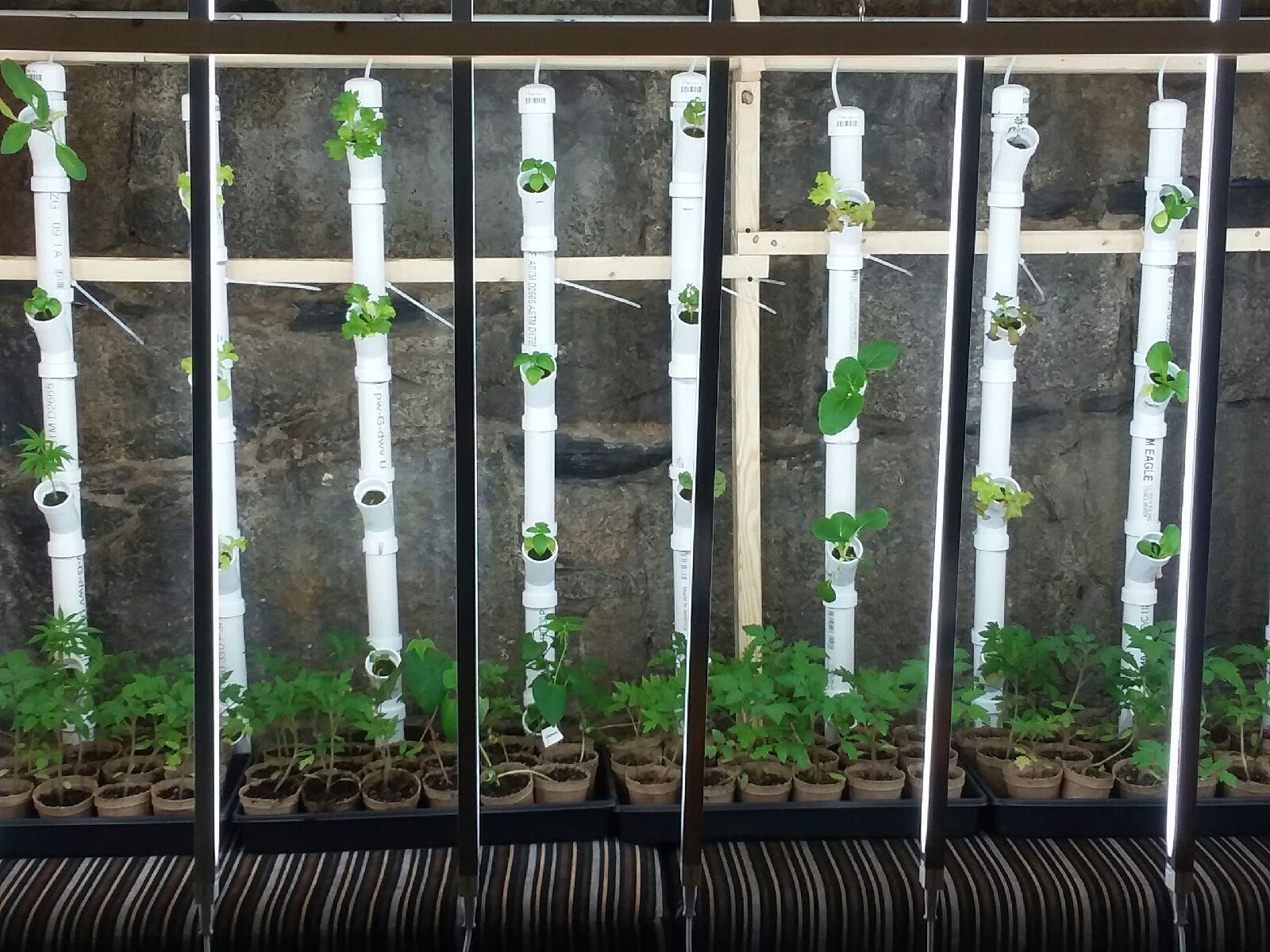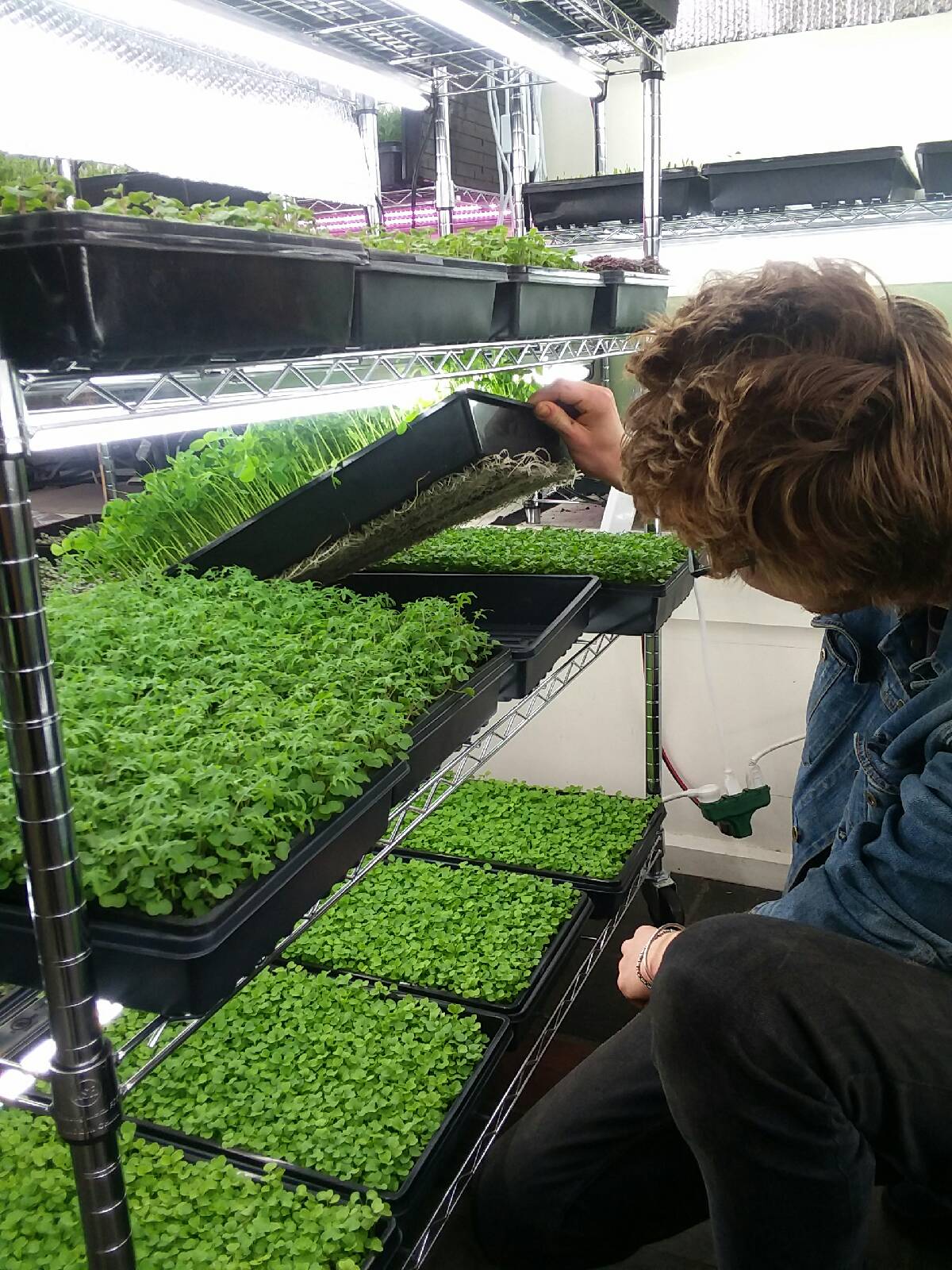There is a growing movement of sustainable urban agriculture helping to solve one of our most pressing environmental and human health issues. Agriculture across the United States and the world is often practiced in a very unsustainable manner, depleting soil health, utilizing harsh chemicals, and causing great ecological damage. And in urban areas, residents can often lack access to nutrient-rich, sustainably grown food.
But what If we told you it was possible to grow extremely nutritious food right in the middle of the city with zero to no waste. This is the story of Boston Microgreens (BMG), an urban farm that has caught the attention of foodies and environmentalists alike.
 Boston Microgreens
Boston Microgreens
Just like any other farm, BMG deal with their daily dose of seeding, watering and harvesting, but something about this farm is different. Even though everything here is grown in soil, crops are grown underground with absolutely no sunlight. Everything grows in levels, on tall racks that fill the entire room. The light comes from energy efficient fluorescent and LED lights that line each grow level.
Boston Microgreens was started back in January of 2018 as a bootstrap operation in a South End basement apartment. Within 6 months all the furniture was gone and Boston Microgreens was fully alive, supplying 20 restaurants with standing weekly orders. They soon expanded into a larger space in South Boston where they now have 2000 square feet and are capable of producing over 6,000 pounds of microgreens per year. BMG brings the farm to the chef, into the kitchen and onto the plate by selling live trays of microgreens that chefs can keep in their walk in coolers keeping the product alive until the very last minute. This allows the kitchen to harvest only what they need for each service which reduces waste.
Renewable & Efficient
 “The farm is extremely efficient” says Natalie Wannamaker, plant manager at the space. “We truly test the limits of how little resources one can use to produce such a nutrient dense crop”. For those of you who don’t know, microgreens are the baby version of any common vegetable and contain 4 to 6 times the nutrient levels of their mature counterparts.
“The farm is extremely efficient” says Natalie Wannamaker, plant manager at the space. “We truly test the limits of how little resources one can use to produce such a nutrient dense crop”. For those of you who don’t know, microgreens are the baby version of any common vegetable and contain 4 to 6 times the nutrient levels of their mature counterparts.
“The basement is the key”, says Oliver, recent Northeastern Graduate and founder of this small venture. “It allows us to keep conditions very steady, most importantly it keeps cool in the summer”. Oliver explained that one of the biggest problems facing indoor farms is the high utility cost associated with not only the lights but the climate control to counteract the heat they give off. LED’s are great because they use power much more efficiently, converting more energy into light instead of heat.
It was interesting to learn that Boston Microgreens sources all of its energy from renewable sources, mostly wind and solar. Being closer to the chef and reducing transport emissions is not enough according to Oliver. “This can be pushed much further...while maintaining profitability” he added with a grin. The company made the switch to renewables this year in early 2019 and hasn't looked back ever since. All packaging is made from compostable plant material and all used trays are picked up from restaurants and composted.
The farms relative water consumption is also something worth pointing out. Crops are grown on flood tables and watering is controlled through an automated computer system that knows exactly when each tray needs water and all water that isn't absorbed is recycled for the next time. This approach uses 5% of the amount of water of traditional farming and presents a lot of potential when we realize that 80-90% of the consumptive water in the US today is used for agriculture.
Boston Microgreens is a perfect example of how a sustainable, small indoor urban farming model can be realistic. Of how compromise is not always necessary. Producing food close to where it is needed to reduce transportation emissions, with creative climate control solutions to reduce energy use, taking advantage of technology to maximize water efficiency, and powering it all with renewable energy.